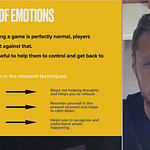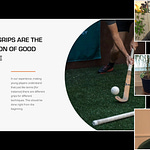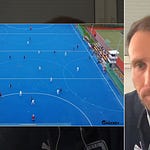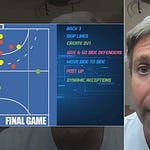When it comes to coaching a mixed team—where players have varying skill, ambition, and experience—the one thing every field hockey coach should walk away with from this session is the importance of understanding, managing, and leveraging individual drives within a team environment. Specifically, how a player’s internal motivations (“drives” in the context of the Management Drives model shared by Tin Matkovic) can and should shape our communication, interactions, and ultimately the team’s collective performance.
Why is this critical? Most of us, whether we’re coaching adult social squads or development-oriented junior teams, have felt the conflict between high-achievers, casual players, and those somewhere in the middle. We try to set common goals, develop a consistent team culture, and run effective training sessions, but inevitably some people want more, others less. You cannot enforce a one-size-fits-all solution, or simply run things as you would with a homogeneous elite group. As Tin Matkovic put it:
“You have individuals in your teams that are all driven differently. I don’t think anybody wants to lose... but some of them find it super important, other people are finding it less important due to some defining it as their profession and some as their hobby.”
The actionable insight here is simple but often neglected: as coaches, it’s our job not only to observe technical and tactical strengths, but also to understand what drives each individual. From the blue-structured, detail-oriented types to the green harmony-seekers and orange result-driven competitors, if you can tailor your communication and feedback to their underlying motivations, you unlock a new layer of engagement—and from there, development.
How to Use This in Day-to-Day Coaching
Diagnostic: Incorporate a quick motivational test (or an honest conversation) with each player at the start of the season. Find out what drives them at a deeper level—not just what they say they want to achieve, but why they play.
Communication: Use the language that “lands” best for each player. For your blue-driven players, send clear training plans and objectives; for greens, highlight team harmony and feeling included; for oranges, focus on targets and opportunities to take responsibility. Tin Matkovic gave a great example: “With a blue-orientated person, I’d connect best just by sending an Excel sheet… for green, it’s all about being in harmony.”
Feedback & Goal Setting: Instead of generic feedback, tailor tasks and development objectives for each player, even within shared team sessions. This way, everyone feels their development is accounted for, and not just lost in the group.
Team Selection & Roles: When you have to select or deselect players, anchor those decisions not just in technical ability but also in role-fit—what drives them and how those drives serve the team engine.
This approach doesn’t mean splitting your squad into silos. On the contrary, it gives everyone a sense of belonging, maximises your retention, and helps you keep the team cohesive for longer, even if players’ skills or ambitions vary. You build trust, reduce conflict, and support a living, evolving team culture—crucial for mixed teams where change is constant.
“Getting them on board to understand their plusses and minuses gives you a bigger picture of success rate because then you can calculate your engine exactly... you’ll know how to communicate. Shout at one doesn’t mean that the second one will result in the same effect.” (Tin Matkovic)
Why Every Field Hockey Coach Should Watch the Full Masterclass
If you coach a squad anywhere on the spectrum from youth development to adult recreational, or you’re facing the challenge of making “mixed teams” work, this is the masterclass to dissect. It goes far deeper than simply splitting groups by ability or running a few extra reps. Tin Matkovic offers multiple, practical frameworks for balancing availability, ambition, experience, learning speeds, and role understanding—backed up by real, honest stories from inside the club environment. The session covers every major headache we all face in grassroots and club hockey: how to structure training, handle selection, communicate when ambitions clash, and keep everyone motivated without losing the plot.
Another interesting related masterclass for you to consider was the one about Team Dynamics by Theo ten Hagen.
Read on below (for paid subscribers) ↓ for a detailed breakdown of the 3 biggest takeaways from this workshop—each one full of actionable advice and deeper commentary.












